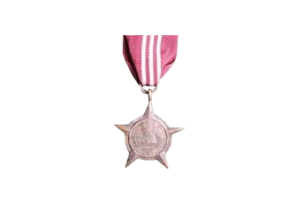
A non-commissioned officer (NCO) is a military officer who does not hold a commission. Non-commissioned officers usually earn their position of authority by promotion through the enlisted ranks. In contrast, commissioned officers usually enter directly from a military academy, officer training corps (OTC) or reserve officer training corps (ROTC), or officer candidate school (OCS) or officer training school (OTS), after receiving a post-secondary degree.
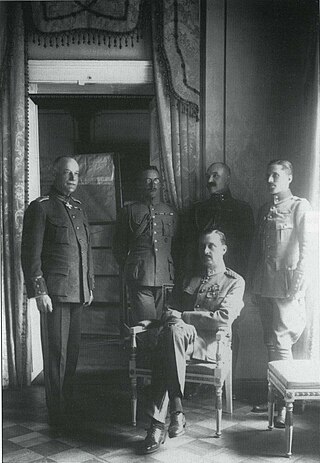
Adjutant is a military appointment given to an officer who assists the commanding officer with unit administration, mostly the management of human resources in an army unit. The term adjudant is used in French-speaking armed forces as a non-commissioned officer rank similar to a staff sergeant or warrant officer but is not equivalent to the role or appointment of an adjutant.
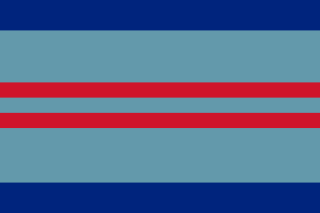
Air vice-marshal (AVM) is a two-star air officer rank which originated in and continues to be used by the Royal Air Force. The rank is also used by the air forces of many countries which have historical British influence and it is sometimes used as the English translation of an equivalent rank in countries which have a non-English air force-specific rank structure.
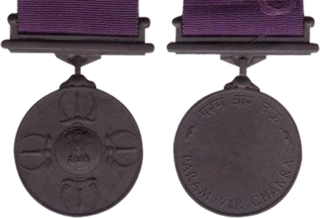
The Param Vir Chakra (PVC) is India's highest military decoration, awarded for displaying distinguished acts of valour during wartime. Param Vir Chakra translates as the "Chakra of the Ultimate Brave", and the award is granted for "most conspicuous bravery in the presence of the enemy". As of January 2018, the medal has been awarded 21 times, of which 14 were posthumous and 16 arose from actions in Indo-Pakistani conflicts. Of the 21 awardees, 20 have been from the Indian Army and one has been from the Indian Air Force. Major Somnath Sharma was the first recipient. A number of state governments of India as well as ministries of the central government provide allowances and rewards to recipients of the PVC.
Marshal of the air force or marshal of the air is a five-star rank and an English-language term for the most senior rank in some air forces. It is usually the direct equivalent of a general of the air force in other air forces, a field marshal or general of the army in many armies, or a naval admiral of the fleet.
Junior Commissioned Officer (JCO) is a term used for a group of military ranks which is higher than havildar and lower than lieutenant. The term is only used by Bangladesh, India, and Pakistan. Senior havildars are promoted to JCO rank on the basis of merit and seniority, restricted by the number of vacancies. JCOs are treated as a separate class and hold additional privileges. Primarily the term was associated with armies but since the 2000s India and Pakistan's navies and air forces are using the term to indicate their Chief Petty Officers and Warrant Officers.
Indian Army Ranks can be broadly classified into three categories: Commissioned Officers, Junior Commissioned Officers and Other Ranks.
The following graphs presents the officer ranks of the Indian Navy. These ranks generally correspond with those of Western militaries, and reflect those of the British military ranks.

A five-star rank is the highest military rank in many countries. The rank is that of the most senior operational military commanders, and within NATO's standard rank scale it is designated by the code OF-10. Not all armed forces have such a rank, and in those that do the actual insignia of the five-star ranks may not contain five stars. For example: the insignia for the French OF-10 rank maréchal de France contains seven stars; the insignia for the Portuguese marechal contains four gold stars. The stars used on the rank insignias of various Commonwealth of Nations are sometimes referred to colloquially as pips, but are stars of the orders of the Garter, Thistle or Bath or Eversleigh stars depending on the wearer's original regiment or corps, and are used in combination with other heraldic items, such as batons, crowns, swords or maple leaves.

The Ministry of Defence (MoD) is charged with coordinating and supervising all agencies and functions of the government relating directly to national security and the Indian Armed Forces. The President of India is the ceremonial commander-in-chief of the armed forces of the country. The Ministry of Defence provides policy framework and resources to the armed forces to discharge their responsibility in the context of the defence of the country. The Indian Armed Forces and Indian Coast Guard under the Ministry of Defence are primarily responsible for ensuring the territorial integrity of India.
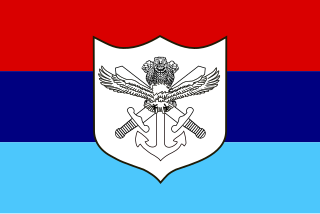
The Indian Armed Forces are the military forces of the Republic of India. It consists of three professional uniformed services: the Indian Army, Indian Navy, and Indian Air Force. Additionally, the Indian Armed Forces are supported by the Central Armed Police Forces, Indian Coast Guard and Special Frontier Force and various inter-service commands and institutions such as the Strategic Forces Command, the Andaman and Nicobar Command and the Integrated Defence Staff. The President of India is the Supreme Commander of the Indian Armed Forces but the executive authority and responsibility for national security is vested in the Prime Minister of India and their chosen Cabinet Ministers. The Indian Armed Forces are under the management of the Ministry of Defence of the Government of India. With strength of over 1.4 million active personnel, it is the world's second-largest military force and has the world's largest volunteer army. It also has the third-largest defence budget in the world. The Global Firepower Index report lists it as the fourth most-powerful military.

Gorget patches are an insignia in the form of paired patches of cloth or metal on the collar of a uniform (gorget), used in the military and civil service in some countries. Collar tabs sign the military rank, the rank of civil service, the military unit, the office (department) or the branch of the armed forces and the arm of service.

The Defence Services Staff College (DSSC) is a defence service training institution of the Ministry of Defence, Government of India.
One Rank One Pension (OROP), or "same pension, for same rank, for same length of service, irrespective of the date of retirement", is a longstanding demand of the Indian armed forces and veterans. The demand for pay-pension equity, which underlies the OROP concept, was provoked by the exparte decision by the Indira Gandhi-led Indian National Congress (INC) government, in 1973, two years after the historic victory in the 1971 Bangladesh war.

The Pakistani prisoners of war during the Indo-Pakistani War of 1971 were the servicemen deployed in the Eastern Command of the Pakistan armed forces who were held in by the Indian Army.

The Siachen Glacier Medal is awarded for service in the Siachen conflict along India's northern border with Pakistan. Awarded to the Indian Air Force for Operation Meghdoot, in support of activities in support of troops serving in the Siachen Glacier area since April 1984.

All branches of the Indian Armed Forces have women in combat roles. Women are allowed in combat services and supervisory roles. The Indian Air Force had 13.09% (2018) and 8.50% (2014) women; the Indian Navy 6% (2018) and 3% (2014); the Indian Army 3.80% (2018) and 3% (2014). As of 2020, three officers have the rank of lieutenant-general or equivalent, all in the Medical Services. In May 2021, 83 women were inducted as Jawans for the first time in the Indian Army, in the Corps of Military Police.
The Defence Cyber Agency (DCyA) is a tri-service command of the Indian Armed Forces. Headquartered in New Delhi, the agency is tasked with handling cyber security threats. The DCyA draws personnel from all three branches of the Armed Forces. The head of the DCyA is an officer of two-star rank, and reports to the Chief of Defence Staff (CDS) through the Integrated Defence Staff (IDS).

The Armed Forces Special Operations Division (AFSOD) is a tri-service command of the Indian Armed Forces. The division is tasked to carry out special operations. The AFSOD draws personnel from all three special warfare branches of the Armed Forces.

General is a four-star general officer rank in the Indian Army. It is the highest active rank in the Indian Army. General ranks above the three-star rank of lieutenant general and below the five-star rank of field marshal, which is largely a war-time or ceremonial rank.
